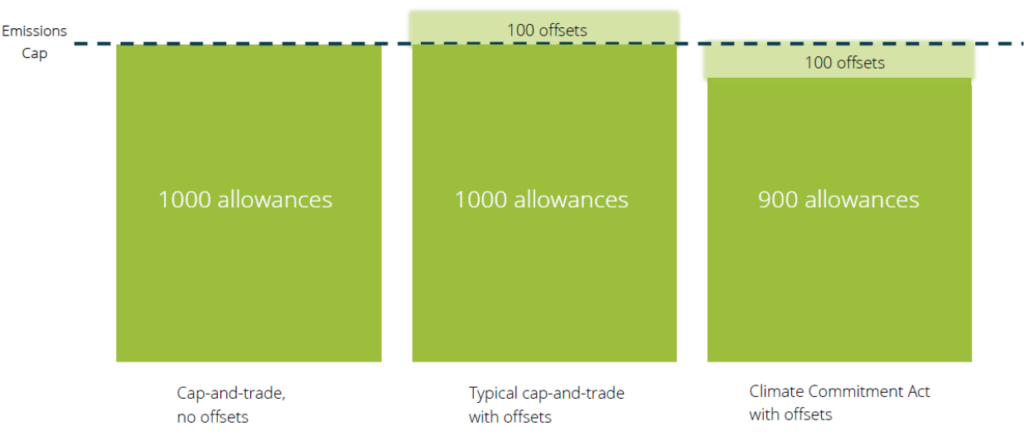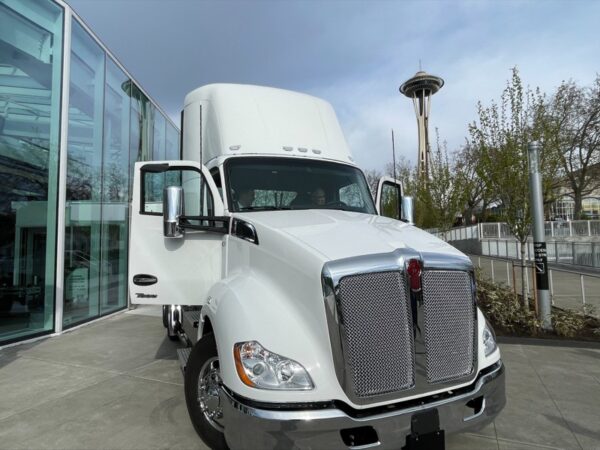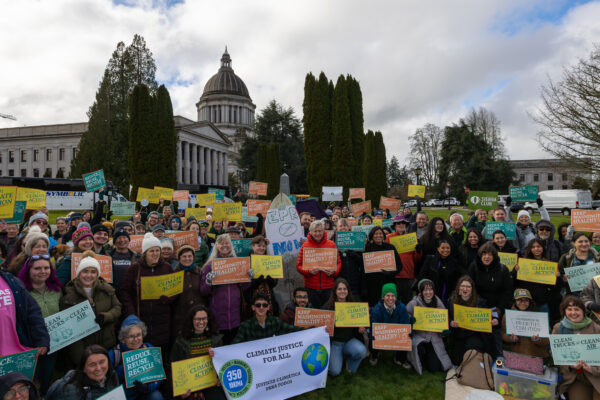Think of a “carbon offset” as something you do to make up for something else. Let’s say you run an industrial company that owns a widget factory that burns oil and/or gas. To make up for the carbon pollution you create manufacturing widgets, you can pay a fee to “offset” that damage. That money goes to fund projects that help reduce carbon emissions.
In forestry, for instance, these include:
- Reforestation: Planting trees in areas that have been logged.
- Avoided conversion: Preserving a forest that might have been cut.
- Improved forest management: Changing forestry practices—such as lengthening the time between harvests—to store more carbon.
Offsets in other areas can take many forms, such as reducing the amount of methane produced by livestock or reducing the use of chemicals that affect atmosphere-protecting ozone.
The CCA requires that offsets be “real, permanent, quantifiable, verifiable, and enforceable” and provide direct environmental benefit to the state. Each offset project must store more carbon than if the project had never happened. Each project must improve water or air quality.
Each offset credit represents one metric ton of carbon dioxide removed from the atmosphere.
What is an “allowance” and how does it relate to offsets?
Under the CCA, large polluters like transportation fuel suppliers must purchase an “allowance” for each metric ton of greenhouse gas emissions they’re responsible for. The revenue from these allowances goes to the Washington State budget to fund climate investments that will reduce emissions and support climate resilience.
The CCA also allows polluters to purchase a limited number of offsets, instead of allowances, to meet their compliance obligation under the law. Offsets are sold by entities like forest landowners who develop projects to sequester and store additional carbon. Revenue from offsets can provide funds for improved land management.
What is the “emissions cap” and why is it important?
The Climate Commitment Act sets a declining “cap” on emissions for sectors of the economy covered by the law. The state then issues a corresponding number of carbon allowances. A unique feature of the CCA is that carbon offsets are “under the emissions cap.”
How does this work?
- Each time a polluter purchases offset credits, the state retires an equivalent number of allowances.
- As a result, the total emissions stay the same, at the cap set by the state. But the actual amount of carbon in the atmosphere goes down because of the carbon-storing benefits of the offset projects.
In other cap-and-trade systems, like the one in California, offsets are “above the cap.” This means that allowances are not retired as offsets are purchased. As a result, offsets may enable more pollution and emissions may increase.
Here’s a chart to help you visualize the difference. The numbers are for illustration purposes only.

What’s next for offsets?
Offset projects take time to plan, and none have yet registered with the Department of Ecology. We expect to see projects emerge over the next couple of years.
There is discussion about the possibility of connecting Washington’s program to California’s. The issue of whether offsets are above the cap, or below, will be central.
In addition, we’re hoping that Ecology will consider more innovations, such as:
- Aggregation. This would allow smaller forest landowners to join together to create an offset project. This would help remove barriers to offset projects.
- More types of offset projects. Ecology has signaled that it will explore other kinds of offset projects, such as agricultural offsets or “blue carbon” in coastal and marine ecosystems.
As the state works out how the CCA will function, YOUR voice will be critical. We’ll keep you posted as things develop.



